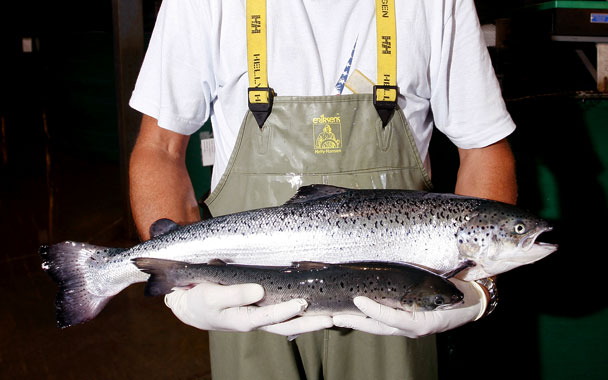The Obama administration on Friday announced a strategy to start slashing emissions of methane, a powerful greenhouse gas released by landfills, cattle, and leaks from oil and natural gas production.
The
methane strategy is the latest step in a series of White House actions
aimed at addressing climate change without legislation from Congress.
Individually, most of the steps will not be enough to drastically reduce
the United States’ contribution to global warming. But the Obama
administration hopes that collectively they will build political support
for more substantive domestic actions while signaling to other
countries that the United States is serious about tackling global
warming.
In
a 2009 United Nations climate change accord, President Obama pledged
that by 2020 the United States would lower its greenhouse gas emissions
17 percent below 2005 levels. “This methane strategy is one component,
one set of actions to get there,” Dan Utech, the president’s special
assistant for energy and climate change, said on Friday in a phone call
with reporters.
Environmental
advocates have long urged the Obama administration to target methane
emissions. Most of the planet-warming greenhouse gas pollution in the
United States comes from carbon dioxide, which is produced by burning
coal, oil and natural gas. Methane accounts for just 9 percent of the
nation’s greenhouse gas pollution — but the gas is over 20 times more
potent than carbon dioxide, so even small amounts of it can have a big
impact on future global warming.
And
methane emissions are projected to increase in the United States, as
the nation enjoys a boom in oil and natural gas production, thanks to
breakthroughs in hydraulic fracturing technology. A study
published in the journal Science last month found that methane is
leaking from oil and natural gas drilling sites and pipelines at rates
50 percent higher than previously thought. As he works to tackle climate
change, Mr. Obama has generally supported the natural gas production
boom, since natural gas, when burned for electricity, produces just half
the greenhouse gas pollution of coal-fired electricity.
Environmental
groups like the Sierra Club have campaigned against the boom in natural
gas production, warning that it could lead to dangerous levels of
methane pollution, undercutting the climate benefits of gas. The oil and
gas industry has resisted pushes to regulate methane leaks from
production, saying it could slow that down.
A
White House official said on Friday that this spring, the Environmental
Protection Agency would assess several potentially significant sources
of methane and other emissions from the oil and gas sector, and that by
this fall the agency “will determine how best to pursue further methane
reductions from these sources.” If the E.P.A. decides to develop
additional regulations, it would complete them by the end of 2016 — just
before Mr. Obama leaves office.
Among the steps the administration announced on Friday to address methane pollution:
■
The Interior Department will propose updated standards to reduce
venting and flaring of methane from oil and gas production on public
lands.
■
In April, the Interior Department’s Bureau of Land Management will
begin to gather public comment on the development of a program for the
capture and sale of methane produced by coal mines on lands leased by
the federal government.
■
In June, the Agriculture Department, the Energy Department and the
E.P.A. will release a joint “biogas road map” aimed at accelerating
adoption of methane digesters, machines that reduce methane emissions
from cattle, in order to cut dairy-sector greenhouse gas emissions by 25
percent by 2020.
Advocates
of climate action generally praised the plan. “Cutting methane
emissions will be especially critical to climate protection as the U.S.
develops its huge shale gas reserves, gaining the full greenhouse gas
benefit from the switch away from coal,” said Paul Bledsoe, a former
White House climate change aide under President Bill Clinton, now with
the German Marshall Fund.
Howard
J. Feldman, director of regulatory and scientific affairs for the
American Petroleum Institute, which lobbies for oil and gas companies,
said he hoped the steps would not lead to new regulations on his
industry. “We think regulation is not necessary at this time,” he said.
“People are using a lot more natural gas in the country, and that’s
reducing greenhouse gas.”
Since
cattle flatulence and manure are a significant source of methane,
farmers have long been worried that a federal methane control strategy
could place a burden on them. But Andrew Walmsley, director of
congressional relations for the American Farm Bureau Federation, said
that his group was pleased that, for now, the administration’s proposals
to reduce methane from cattle were voluntary.
“All
indications are that it’s voluntary,” he said, “but we do see increased
potential for scrutiny for us down the line, which would cause
concern.”
(A version of this article appears in print on March 29, 2014, on page A12 of the New York edition)


